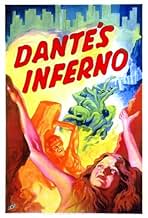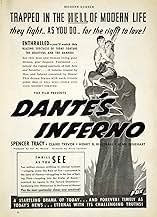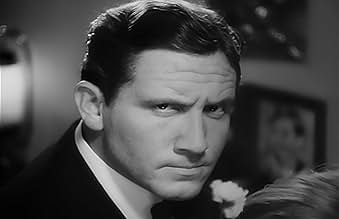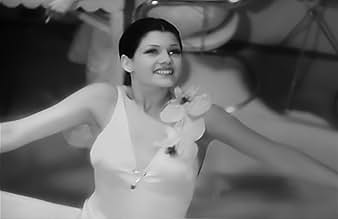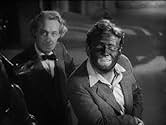Jim Carter moves in on the McWade's carnival concession which shows scenes from Dante's "Inferno". He makes it a going concern, marrying Betty along the way. An inspector calls the amusement... Read allJim Carter moves in on the McWade's carnival concession which shows scenes from Dante's "Inferno". He makes it a going concern, marrying Betty along the way. An inspector calls the amusement pier unsafe but Carter bribes him. The pier collapses, leading to the inspector's suicide... Read allJim Carter moves in on the McWade's carnival concession which shows scenes from Dante's "Inferno". He makes it a going concern, marrying Betty along the way. An inspector calls the amusement pier unsafe but Carter bribes him. The pier collapses, leading to the inspector's suicide, injury to Pop McWade, trial for Carter, and Betty's leaving him. Carter starts over with... Read all
- Awards
- 1 nomination total
- Alexander Carter
- (as Scott Beckett)
- Dancer
- (as Rita Cansino)
- Girl in Stoke-Hold
- (uncredited)
- Man in Stoke-Hold
- (uncredited)
- Mr. Williams
- (uncredited)
- Girl in Stoke-Hold
- (uncredited)
- Concessionaire's Wife
- (uncredited)
- Photographer
- (uncredited)
- Passenger in Boiler Room
- (uncredited)
- Amusement Park Patron
- (uncredited)
Featured reviews
The movie's basically a morality tale, showing one man's (Tracy) ruthless climb from bottom to top and learning his lesson after all. I really like the way Carter ingratiates himself socially into the upper class; just having big bucks is not enough. So he uses is well-honed entrepreneurial skills to grease the wheels. And, thanks reviewer Albertsanders for detailing how the story's basis lies in actual fact, surprising as that may seem.
My only complaint is the miracle ending. It sure doesn't comport with the events aboard ship. My guess is that it was a gesture to the newly formed Production Code. Or maybe it was just pandering to what the studio thinks audiences want. Either way, it undercuts a good story and maybe the best special effects of the time.
Tracy plays a ship stoker and would be con man who gets fired off his ship for malingering. Down on his luck, kindly old Henry B. Walthall who owns a sideshow attraction at a carnival midway takes him in and Walthall's daughter Claire Trevor falls for him.
Spence is nothing if not determined to make something of himself and he becomes a rich man in the amusement game. But his ethics leave a lot to be desired.
The title is not Dante Alighieri's famous poetic saga of his journey through hell, but it's the name of the exhibit that Walthall owns. It's 'educational' but Tracy starts on his road to financial success by glamorizing the more prurient aspects of it.
The Inferno catches fire and there's a climatic ship's fire as well that Cecil B. DeMille could not have staged better. One wishes the film had been in color for that as well as the imaginary ten minute journey through hell that Walthall describes to Tracy.
The dancing team on the ship before the fire marks the screen debut of one Marguerite Carmen Cansino or better known as Rita Hayworth. She was quite the dancer on screen as well as in this person's opinion, the biggest sex symbol the screen ever knew.
Dante's Inferno was a fine film for Tracy to leave Fox with. But it would have astonished the executives at Fox if they could have imagined the career direction it would take at MGM.
In the main part of the 1935 movie, Tracy plays an unscrupulous amusement park owner who decides his next attraction will be a trip through Hell called "Dante's Inferno". In his usual corner-cutting manner, fire protection measures are short-changed with the inevitable result that there is a disastrous fire. Following this is a dream sequence in which Dante's vision of Hell is re-enacted and Tracy is appropriately punished. Finally there is an ending that I won't reveal.
The non-fantasy part of the story is strikingly similar to an actual, highly publicized, event that took place about 20 years earlier than the conception of the movie. At that time, Coney Island, which is part of Brooklyn, itself part of New York City, was the premier amusement park area of the world. There were two parks, Steeplechase, which emphasized fun and sex, and Luna Park, which emphasized art and youth. William H. Reynolds, an underhanded real estate developer and former Republican state senator, was attracted by the profits and decided to create a third giant park. He called his Dreamland.
Following his typical pattern, Reynolds, through his ties to the corrupt Tammany Democratic political machine, was able to have streets closed to make some inexpensive land suitable for a large amusement park. This deprived poor people of access to the beach, but so what? Patrons of his park, and of luxury hotels, had no problem.
Oddly, his concept, despite the usual sleazy attractions, also had morality, even religiosity, as a major theme. It started off with an attraction called Genesis, the Bible story of the creation of the world. There was another called Destruction of Pompeii, presumably as payment for wickedness. His crowning effort along this line was called Hell Gate, a fantasy ride through Hell, with a gigantic Satan smirking over the entrance.
In the early hours of May 27, 1911, as they rushed to ready the attraction for the Spring opening, workers accidentally started a fire. Firefighters responded, but because of low water pressure (for which many also blamed Reynolds' machinations), could not prevent its spread and all of Dreamland, including Hell Gate, was destroyed.
Don't you agree that the inspiration, if not the actual plot of the movie Dante's Inferno, was drawn from real life? And isn't it amusing that, considering his behavior, Reynolds was so preoccupied with morality and retribution?
Incidentally, I saw this film when I was 15 and it scared me silly.
Nothing quite that gaudy here - The central figure (Tracy) begins as a stoker, but slowely rises in the world, frequently not realizing that his greed and drive have alienated friends and relatives. The source of his wealth is the carnival and gambling empire he has put together. In the course of building it he meets Henry Walthall, who wants to build a midway building that shows Dante's Inferno - Walthall believes it will be beneficial to the public as it will show the public the dangerous ice they are on if they continue to sin. Of course this is the screenwriter's take on Dante's Divine Comedy, and the Inferno in particular - actually Dante is far too clever a poet to have such a trivial motive in the actual work for writing it that way.
That Tracy is saved in the end is due to heeding the wisdom of his friend (later his father-in-law)and due to a sea tragedy - Tracy's latest addition to his empire is a gambling ship, which catches fire off the coast of the U.S., and requires Tracy's leadership qualities to save the passengers and crew. A suitable fiery conclusion to the film - and also an historic footnote: the boat is made to resemble the ill-fated Morro Castle, which burned in a fire in 1934 (the year before this film) off the coast of New Jersey, killing 130 passengers and crew. As such, this is the sole movie I know of that refers to that disaster, except for a line of dialogue in the contemporary satiric comedy BOY MEETS GIRL.
Did you know
- TriviaSpencer Tracy's erratic behavior on this film helped seal his fate with 20th Century-Fox. During filming Tracy disappeared from the set for weeks while on a drunken binge. He reportedly also showed up to the set one day surly and hung over and fell asleep in the "Manhattan apartment" set. The studio locked the stage while he was still asleep; Tracy woke up in a rage and started destroying sets, reportedly causing thousands of dollars worth of damage for which the studio billed him.
- GoofsAll entries contain spoilers
- ConnectionsEdited into Myra Breckinridge (1970)
- SoundtracksThe Wedding March
(1843) (uncredited)
from "A Midsummer Night's Dream, Op.61"
Written by Felix Mendelssohn
Played on a hurdy-gurdy for the wedding photograph
- How long is Dante's Inferno?Powered by Alexa
Details
- Release date
- Country of origin
- Language
- Also known as
- Dante's Inferno
- Filming locations
- Ocean Park Pier, Santa Monica, California, USA(exterior views showing rides including Loop-O-Plane and Chute-the-Chutes)
- Production company
- See more company credits at IMDbPro
Box office
- Budget
- $748,900 (estimated)
- Runtime1 hour 29 minutes
- Aspect ratio
- 1.37 : 1
Contribute to this page


